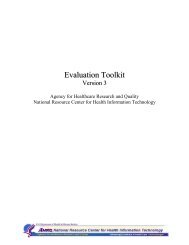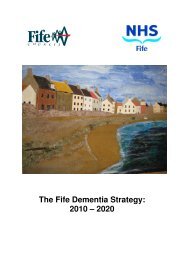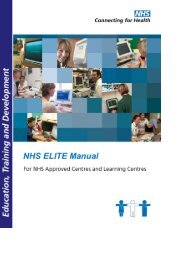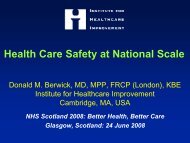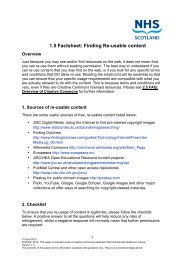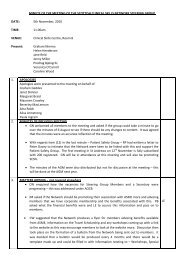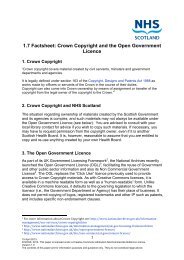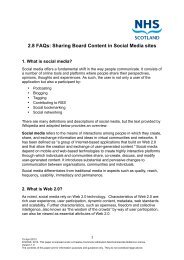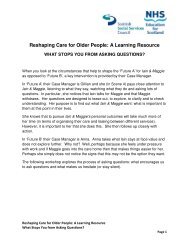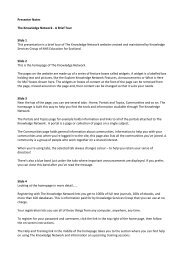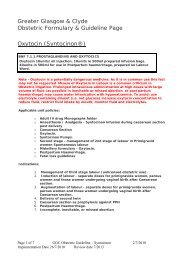ACPCF Infant Guideline - The Knowledge Network
ACPCF Infant Guideline - The Knowledge Network
ACPCF Infant Guideline - The Knowledge Network
You also want an ePaper? Increase the reach of your titles
YUMPU automatically turns print PDFs into web optimized ePapers that Google loves.
Clinical guidance for the Physiotherapy Management of Screened<br />
<strong>Infant</strong>s with Cystic Fibrosis<br />
Introduction<br />
<strong>The</strong>se guidelines have been compiled to complement the Delphi Consensus<br />
on Physiotherapy Management of Asymptomatic <strong>Infant</strong>s with Cystic Fibrosis<br />
(CF). 1<br />
Babies born with CF have essentially normal lungs but within variable time<br />
scales develop chronic respiratory disease which will ultimately be fatal in the<br />
majority of patients. With the recent introduction of newborn screening<br />
throughout the UK babies are diagnosed with CF soon after birth, often before<br />
they have any symptoms or lung pathology. Additionally, babies with mild<br />
mutations who may not have become symptomatic until adult life, are also<br />
being diagnosed in infancy. This means that there is now a cohort of infants<br />
who present to CF centres at a very young age and often with no signs or<br />
symptoms of disease. Over the last two decades, the importance of early<br />
intervention has been recognised, 2,3 and most CF centres have adopted a<br />
policy of close monitoring and aggressive treatment of early lung disease. A<br />
significant number of children with CF now have normal lung function well into<br />
early adulthood even though they are very likely to have underlying lung<br />
pathology. 4<br />
Traditionally in the UK, chest physiotherapy has been instigated at diagnosis,<br />
consisting of twice daily postural drainage (PD) using a head down tip<br />
combined with chest wall percussion. Many babies and young children<br />
presenting to CF centres now display no overt signs of respiratory disease and<br />
have good nutritional status with body mass index (BMI) within normal limits.<br />
Specialist physiotherapists in the UK caring for these babies have begun to<br />
question the role of traditional, routine airway clearance in these<br />
‘asymptomatic’ babies. While health professionals agree unanimously that<br />
physiotherapy interventions are appropriate once respiratory symptoms are<br />
apparent, 5,6 the place of routine daily airway clearance prior to this is less<br />
clear. It is also recognised that while infants may be asymptomatic at<br />
diagnosis they may over a given time span, swing along a spectrum of being<br />
asymptomatic at times and symptomatic at others. How this should be dealt<br />
with in terms of routine airway clearance is also not established.<br />
A review of patients and families by the CF Trust reported that chest<br />
physiotherapy is considered a large burden of care. Families wish to know if<br />
routine treatment is necessary in those babies with few or no symptoms. 7<br />
Physiotherapists have a duty to provide safe and effective care and daily<br />
treatment regimens need to be tailored to individual needs, lifestyle and<br />
symptoms, particularly as long term routine ACT is seen as a substantial<br />
burden for patients and families. 7<br />
With these apparently asymptomatic babies the dilemma now facing<br />
physiotherapists is whether it is necessary to recommend daily routine airway<br />
2




